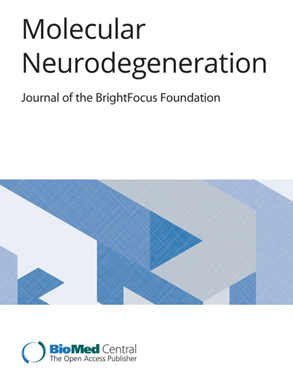Current strategies in the management of dementia with lewy bodies and future directions based on disease pathophysiology
IF 17.5
1区 医学
Q1 NEUROSCIENCES
引用次数: 0
Abstract
Dementia with Lewy bodies (DLB) is thought to be the second most common form of dementia after Alzheimer’s disease, and is characterised by a combination of cognitive, neuropsychiatric and motor symptoms. The present review seeks to discuss current strategies for the management of DLB, and future directions for novel disease-modifying therapies. Current best practice for the clinical management of DLB is based upon therapies that target specific symptom domains due to the lack of disease-modifying therapies. Cholinesterase inhibitors are the frontline treatment for treating cognitive decline in DLB, whereas the treatment of motor symptoms remains challenging due to poor response to dopaminergic therapies and the potential for exacerbation of neuropsychiatric features. There is emerging evidence suggesting a range of further pharmacological and non-pharmacological therapies may be effective in treating specific symptom domains of DLB, but further evidence is warranted to demonstrate their efficacy. A key challenge in the treatment of DLB is incomplete understanding of disease pathophysiology, which has limited attempts to develop disease-modifying therapies. In the present article, we discuss the multi-faceted nature of DLB neuropathology, from Lewy body pathology to mitochondrial dysfunction, and discuss therapies in development that target particular aspects of DLB neuropathology. In particular, we highlight antibody-based therapies to attenuate protein aggregation, compounds that enhance the generation of cellular energy and autophagy-enhancing agents as particular areas of promise. Furthermore, we discuss how optimal strategies for disease modification will be centred on agents that treat DLB neuropathology more holistically, and will be underpinned by a more complete understanding of the pathogenic events that underlie the full spectrum of pathological changes observed in the DLB brain.路易体痴呆的当前治疗策略及基于疾病病理生理学的未来方向
路易体痴呆(DLB)被认为是仅次于阿尔茨海默病的第二种最常见的痴呆形式,其特征是认知、神经精神和运动症状的结合。本综述旨在讨论DLB管理的当前策略,以及新型疾病修饰疗法的未来方向。由于缺乏改善疾病的治疗方法,目前DLB临床管理的最佳实践是基于针对特定症状域的治疗。胆碱酯酶抑制剂是治疗DLB认知能力下降的一线治疗方法,而运动症状的治疗仍然具有挑战性,因为对多巴胺能疗法的反应较差,并且可能加剧神经精神特征。有新的证据表明,一系列进一步的药物和非药物治疗可能对治疗DLB的特定症状域有效,但需要进一步的证据来证明其有效性。DLB治疗的一个关键挑战是对疾病病理生理学的不完全理解,这限制了开发疾病修饰疗法的尝试。在本文中,我们讨论了DLB神经病理的多面性,从路易体病理到线粒体功能障碍,并讨论了针对DLB神经病理特定方面的治疗方法。特别是,我们强调以抗体为基础的治疗方法,以减弱蛋白质聚集,化合物,增强细胞能量的产生和自噬增强剂作为有希望的特定领域。此外,我们讨论了疾病改良的最佳策略将如何以更全面地治疗DLB神经病理学的药物为中心,并将以更全面地了解DLB大脑中观察到的各种病理变化的致病事件为基础。
本文章由计算机程序翻译,如有差异,请以英文原文为准。
求助全文
约1分钟内获得全文
求助全文
来源期刊

Molecular Neurodegeneration
医学-神经科学
CiteScore
23.00
自引率
4.60%
发文量
78
审稿时长
6-12 weeks
期刊介绍:
Molecular Neurodegeneration, an open-access, peer-reviewed journal, comprehensively covers neurodegeneration research at the molecular and cellular levels.
Neurodegenerative diseases, such as Alzheimer's, Parkinson's, Huntington's, and prion diseases, fall under its purview. These disorders, often linked to advanced aging and characterized by varying degrees of dementia, pose a significant public health concern with the growing aging population. Recent strides in understanding the molecular and cellular mechanisms of these neurodegenerative disorders offer valuable insights into their pathogenesis.
 求助内容:
求助内容: 应助结果提醒方式:
应助结果提醒方式:


